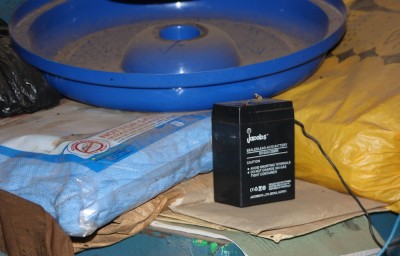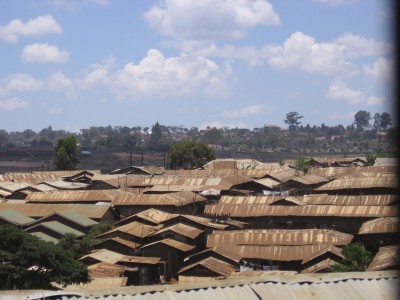Archive for the ‘rural’ Category
Four Things to Consider When Designing Small Solar Systems for Africa
If you are preparing to launch a solar lighting product in sub-Sahara Africa, especially Kenya, here are four things to consider based on my observations in Eastern Kenya earlier this year. No citations here, no scientific data just my thoughts.
- Tradeoffs will happen. Be on the right end of the tradeoff when it does. Usually these tradeoffs are not just price versus features but new thingymajigy vs status quo. Despite the trouble with kerosene, most consumers know how to cope with it. Save the customer time or money and you will be on the better side of the tradeoff. Time in getting a job done or money that is spent as a consequence of the existing solution (medical bills for children studying by kerosene lamps, burns, continued purchase of kerosene etc). If the payoff from your solar solution appears to require a long wait, you may already be on the wrong end of the tradeoff. Find a different benefit to present.
- Aspirations exist. Customers purchasing their first solar lighting product are moving up from kerosene to something cheaper to run. However, once they light up their house they begin to plan for the next electricity consuming device. A bigger radio and a television rank fairly high on the list of these customers. If your product can scale up with them to a point on that journey, they won’t feel they will have to write it off when they are ready for something bigger. Panels that form an array, charge controllers that can be replaced with bigger ones, the option to add batteries…these are some of the ways you can plugin to the customer’s aspirations and grow with them. A point to note; solar home system users in off-grid locations consider a grid connection once it becomes available despite the obvious cost benefit of solar power. A grid connection is considered a step up.
- Price isn’t everything. People like to show off their latest acquisitions, especially when these acquisitions translate into improved perceptions of their social status by their own peers. If your product is known for being cheap, that erodes the ‘brag-abilty‘ of it. Nokia mobile phones were very popular in the slums of Kibera despite not being the cheapest.
- Be part of an ecosystem. While showing off a solar product to residents of rural towns in Kenya earlier this year, they repeatedly asked what they would do with it if it needed repair. Because it features an LED light with integrated power storage, they immediately began asking how it would work with regular solar bulbs or readily available alternatives. They complained the panel was too small (they hesitated to classify it as a solar solution) and it worked with nothing else they that is readily available at their local electronics stores. Any one of those issues was a deal breaker. Play nice with others in the ecosystem and that includes other LED lights, batteries and fundis (local skilled technicians).
It seems to me that any firm selling a 5w-10w panel + 12v 60AH (or more) battery + easily available bulb is on the right path. Now if the solution allows additional panels to be integrated, a charge controller added and bigger batteries plugged in, you have a winner.
Align With The BoP Customer’s Aspirations. Or Die.
Kibera is Kenya’s largest slum: informal settlement if we go by the more established euphemism in use today. The corrugated iron sheet roofs do not stand alone on this vast landscape but are interspersed by TV antennas, so many they seem to stand guard like an army watching over the roofs as far as the eye can see. Should the residents of Kibera be spending their hard earned money on television sets? Shouldn’t they be fighting their way out of poverty? Saving for their future? Investing in better healthcare?
I hear these questions frequently enough from visitors from the West. Very valid questions which even middle class Africans ask of their lower-on-the-BoP ‘brethren’. I especially hear these questions asked by many involved in social enterprises with products that have obvious benefits to users rural, poor or both.
There exists a disconnect between these organizations’ aspirations (for instance: eliminate the use of kerosene) and their customer’s aspirations (for instance: be connected to electricity) introducing some interesting challenges for vendors. The focus by the vendor on building a product that eliminates harm and improves well being leads the business into a cul-de-sac where great products go to die. The same cul-de-sac where healthfood for the masses is to be found together with last year’s new year resolutions. The benefits of the product are undeniable and yet uptake remains poor. Sometimes the message behind the marketing communications destroys any chance a product has in the market. Especially when it asks customers to acknowledge, by purchasing the item, that they are financially unable to cope with the rising cost of living. An admission of defeat. The product does not provide a roadmap for advancement and by being an end in itself rather than a milestone on the journey to success catalyzes little hope for the future. No one wants to be hopeless, no matter how affordable it is.
Putting a great deal of thought into the design of a product comes easy for social entrepreneurs (at least it should) because they put impact before financial reward. However, the always very noble motivation of the service or product informs its positioning in the market. A market that also includes purely commercial players playing by a different rule book. This positioning sometimes aludes, through the products marketing message, to the hardship, poverty or level in society the user is most likely to be in. The poor (generally speaking) don’t wear the title with honor and pride. Reminding them that they are poor and disadvantaged at the point of purchase may only work as long as a competing product that tells them they can be superstars doesn’t exist. Here are two thoughts that are stirred in me whenever I travel to rural areas:
The customer social enterprises seek to convert may be in a disadvantaged situation or season in their life. If your messaging speaks to them as such, there will be a problem. Rural customers, especially those towards the bottom of the economic pyramid, don’t necessarily view themselves as poor. They make sophisticated financial planning decisions all the time trading-off performance against running cost and cost of acquisition against status quo. Speak to the job they are trying to get done and the aspirations they carry or your business will be on the wrong end of the trade-off.
Price isn’t everything in Africa. Ask Airtel, they have found out the hard way. Features you think matter to users may be of little consequence when held up against alternatives. Equity Bank grew rapidly as word of mouth spread about their easy-to-access credit and easy-to-open bank accounts resulting in acquisition of customers previously classified as ‘unbankable’; long queues in banking halls and at the ATMs notwithstanding. Spending a little time (at the very least) with customers and listening to their story may provide you with clues on what they need to get done and how pressing the need for a solution is. The intensity of your customer’s pain dictates the value trade-offs they are willing to make.
A customer only experiences pain because they are trying to get something done without the level of success they consider acceptable. Innovations that have succeeded in Africa have empowered customers not disempowered them. Our next posts will delve a little deeper into this.

